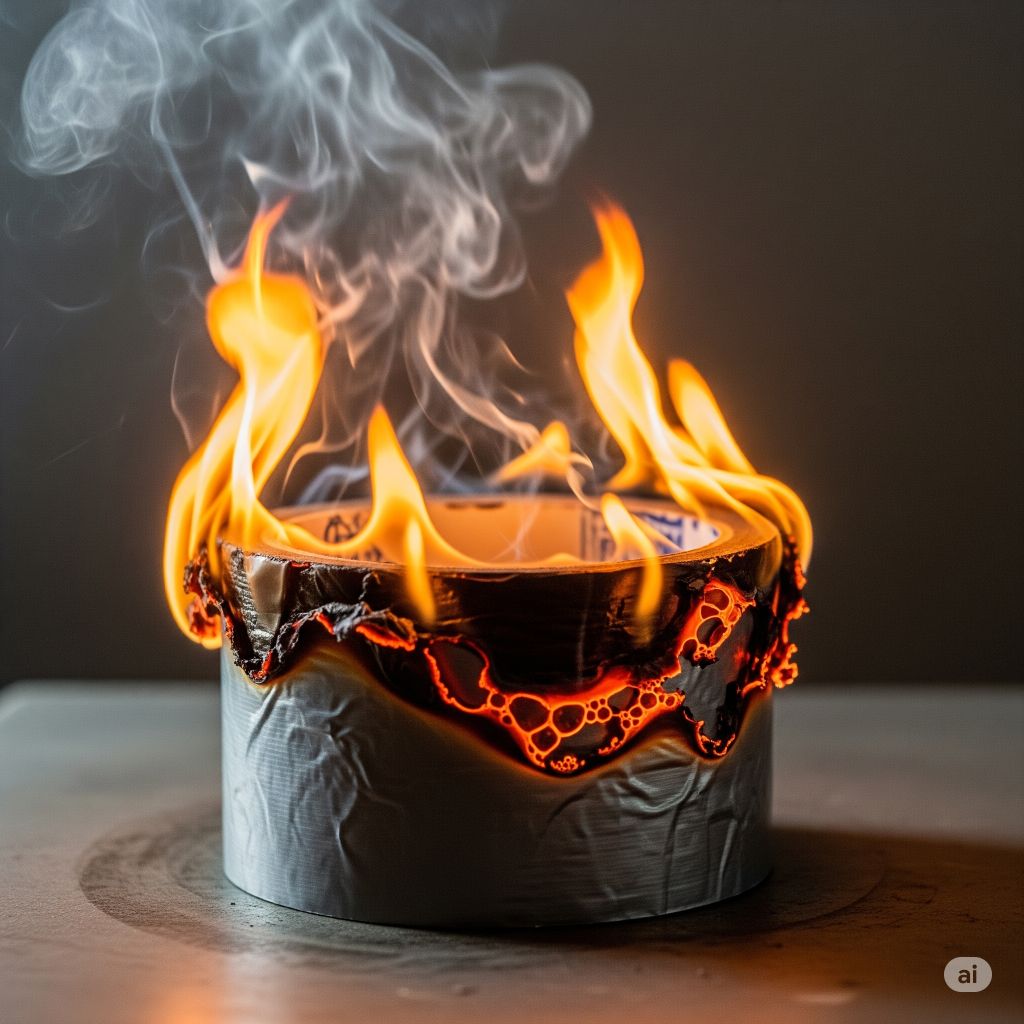
As a DIY enthusiast, I’ve always wondered about the flammability of duct tape. Can this versatile tool really withstand high temperatures, or is it a fire hazard waiting to happen? In this article, I’ll delve into the science behind duct tape and its flammability properties to uncover the truth.
We’ve all heard the saying that duct tape can fix anything, but can it stand up to heat without turning into a potential danger? Join me as I explore whether duct tape is truly fire-resistant or if it’s time to rethink its use in certain situations. Let’s separate fact from fiction and discover the real story behind the flammability of this household staple.
Key Takeaways
- Duct tape is flammable due to its polyethylene backing and rubber-based adhesive.
- There are specific types of duct tape designed to be flame-resistant by using additives or materials.
- Conducting burn tests on duct tape can help assess its flammability and fire resistance.
- Duct tape is more flammable compared to alternatives like masking tape or painter’s tape.
- Debunk myths: Duct tape is not fireproof, different brands vary in flammability, and other adhesive products can also be flammable.
Exploring the Composition of Duct Tape
Duct tape is a versatile adhesive tool used in various situations – but what exactly is it made of? Let’s break it down:
- Adhesive Layer: This sticky layer is typically made of rubber-based or acrylic adhesive that provides the tape’s sticking power.
- Backing Material: The backing of duct tape can be made of a variety of materials such as polyethylene, cloth, or even foil.
- Reinforcing Layer: Some duct tapes have a reinforcing layer that adds strength and durability, often made of fiberglass or nylon.
Duct tape’s composition plays a crucial role in its overall properties, including its flammability and resistance to heat.
Understanding Flammability and Combustibility
When considering whether duct tape is flammable, it’s crucial to understand its combustibility. Duct tape is indeed flammable due to its polyethylene backing and rubber-based adhesive, both of which can catch fire under certain conditions.
- Polyethylene: a common type of plastic used in duct tape backing, is highly flammable, contributing to the tape’s overall flammability.
- Rubber-based adhesive: although designed for strong adhesion, can also be flammable and add to the tape’s combustibility.
To assess a duct tape’s flammability, one can conduct a simple burn test. By lighting a small piece of duct tape with a lighter, you can observe how it reacts to the flame. Keep in mind that flames should be extinguished immediately to prevent any unwanted accidents.
While duct tape is flammable, there are specific types available that are designed to be flame-resistant. These specialized tapes contain additives or materials that make them less susceptible to catching fire, providing an added layer of protection in critical situations.
Understanding the materials used in duct tape’s construction is key to comprehending its flammability and combustibility. By being aware of these factors, individuals can make informed decisions when selecting the right duct tape for their projects.
Conducting Flammability Tests on Duct Tape
When it comes to duct tape flammability, it’s crucial to conduct tests to assess its fire resistance. One common method is the burn test, where a small piece of duct tape is ignited to observe its behavior.
During the test, I’ll look for important indicators such as rate of spread and flame duration. A rapid spread and long flame duration could signify high flammability.
It’s recommended to perform these tests in a controlled environment and to have safety measures in place. Understanding the results of these tests can help in selecting the most suitable duct tape for specific applications.
Remember, always prioritize safety when working with potentially flammable materials like duct tape.
| Important Indicators | Results |
|---|---|
| Rate of spread | High |
| Flame duration | Long |
Comparing Duct Tape to Other Adhesive Products
When comparing duct tape to other adhesive products, it’s essential to consider flammability as a crucial factor. Duct tape is known for its versatility and strength, but is it really flammable when compared to similar products on the market?
In my experience, I’ve found that duct tape tends to be more flammable compared to certain alternatives such as masking tape or painter’s tape. While all adhesive products may have some degree of flammability, duct tape often contains synthetic materials that can make it more susceptible to catching fire.
In applications where fire resistance is a primary concern, it’s crucial to choose the right adhesive product. Understanding the flammability of duct tape in comparison to others can help in making an informed decision when selecting the most suitable product for a specific use case.
Debunking Myths and Misconceptions
When it comes to assessing the flammability of duct tape, there are several myths and misconceptions that need to be debunked. Let me clarify a few key points:
- Myth: Duct tape is completely fireproof.
- Fact: Contrary to popular belief, duct tape is not fireproof. While it may have some resistance to flames, it can still catch fire under certain conditions.
- Myth: All duct tapes are equally flammable.
- Fact: Not all duct tapes are created equal in terms of flammability. Different brands and compositions can vary in their fire resistance properties.
- Myth: Duct tape is the most flammable adhesive product on the market.
- Fact: While duct tape may have some flammability due to the synthetic materials used in its production, there are other adhesive products that are also flammable.
By dispelling these myths and misconceptions, we can better understand the actual flammability characteristics of duct tape and make informed decisions when it comes to choosing the right adhesive product for specific applications.
Conclusion
After debunking common myths surrounding duct tape’s flammability, it’s clear that while duct tape is not fireproof, its flammability varies across different brands. Understanding the nuances of duct tape’s fire resistance is crucial when choosing adhesive products for specific applications. By conducting flammability tests, like the burn test, users can make informed decisions about the safety and suitability of duct tape for their needs. Remember, synthetic materials in duct tape can impact its flammability, so it’s essential to assess each brand’s characteristics. When it comes to fire safety, knowledge is power, and being aware of the flammability traits of duct tape can enhance your adhesive product choices.
Frequently Asked Questions
What is the importance of conducting flammability tests on duct tape?
It is crucial to conduct flammability tests on duct tape to assess its fire resistance level. Testing helps determine its safety in different applications and environments.
How can flammability tests for duct tape be carried out?
Flammability tests for duct tape, such as the burn test, can be conducted to evaluate how the tape reacts to fire and flames.
Is duct tape more flammable compared to other adhesive products?
Duct tape may be more flammable than other adhesive products due to the synthetic materials used in its composition.
Is duct tape fireproof?
No, duct tape is not fireproof. It is essential to understand that duct tape is combustible and can catch fire under certain conditions.
Do different brands of duct tape vary in flammability?
Yes, different brands of duct tape can vary in their flammability levels, so it is necessary to assess each brand individually.
Are there other adhesive products besides duct tape that are flammable?
Yes, besides duct tape, there are various adhesive products in the market that are also flammable. It is essential to consider the flammability of all adhesive options.
